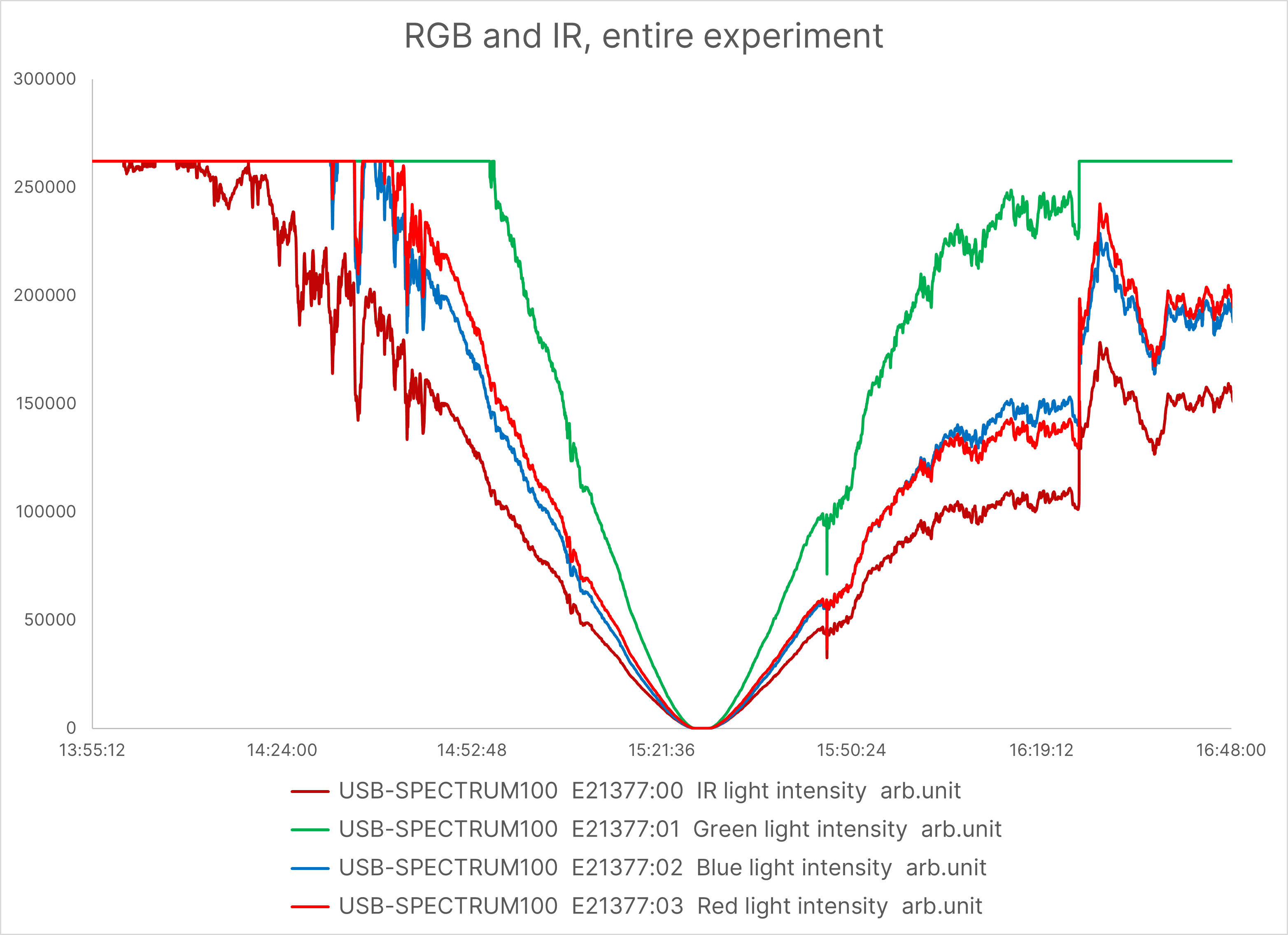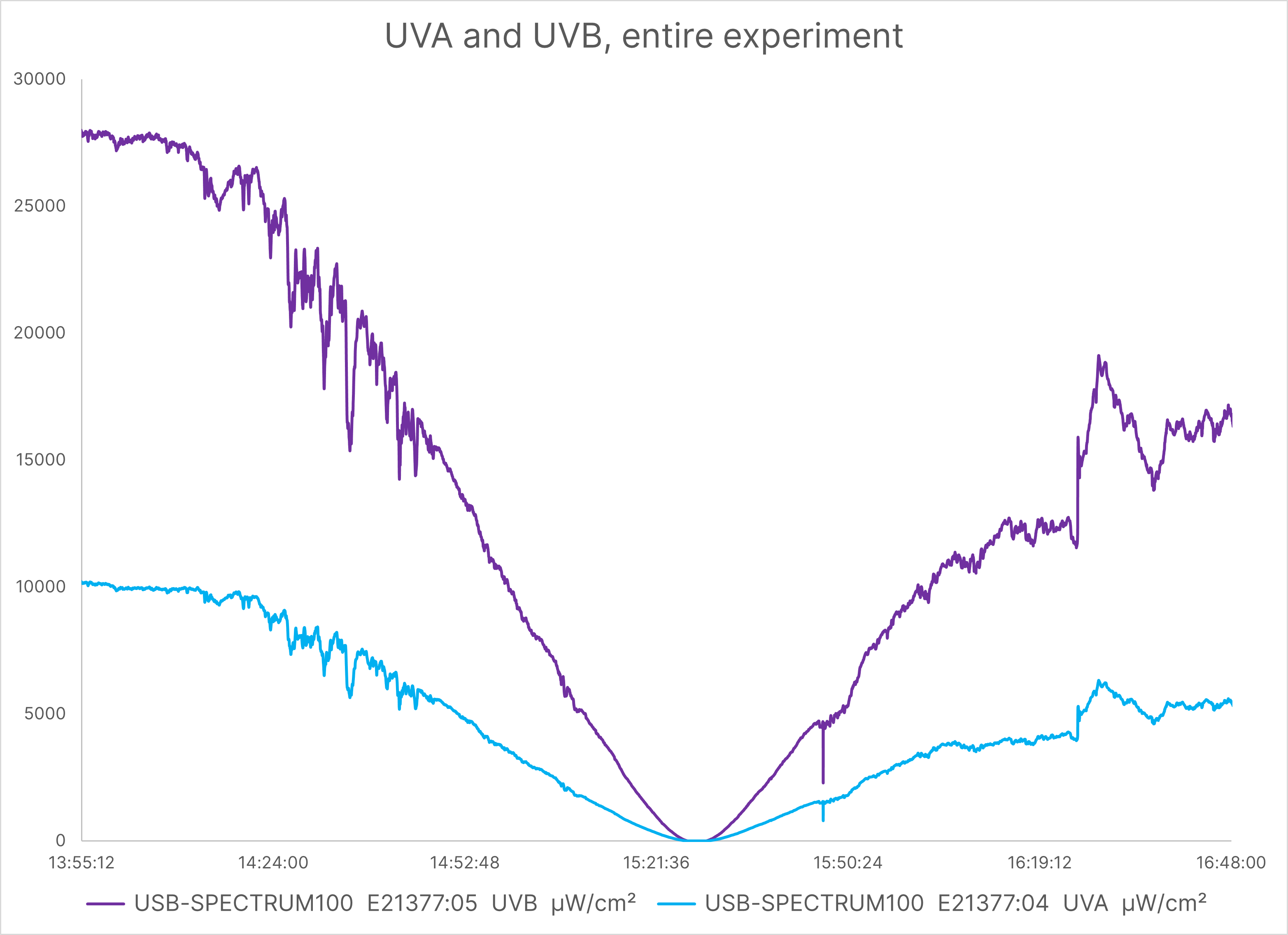Warnings from experts regarding the total solar eclipse explained using the SPECTRUM100
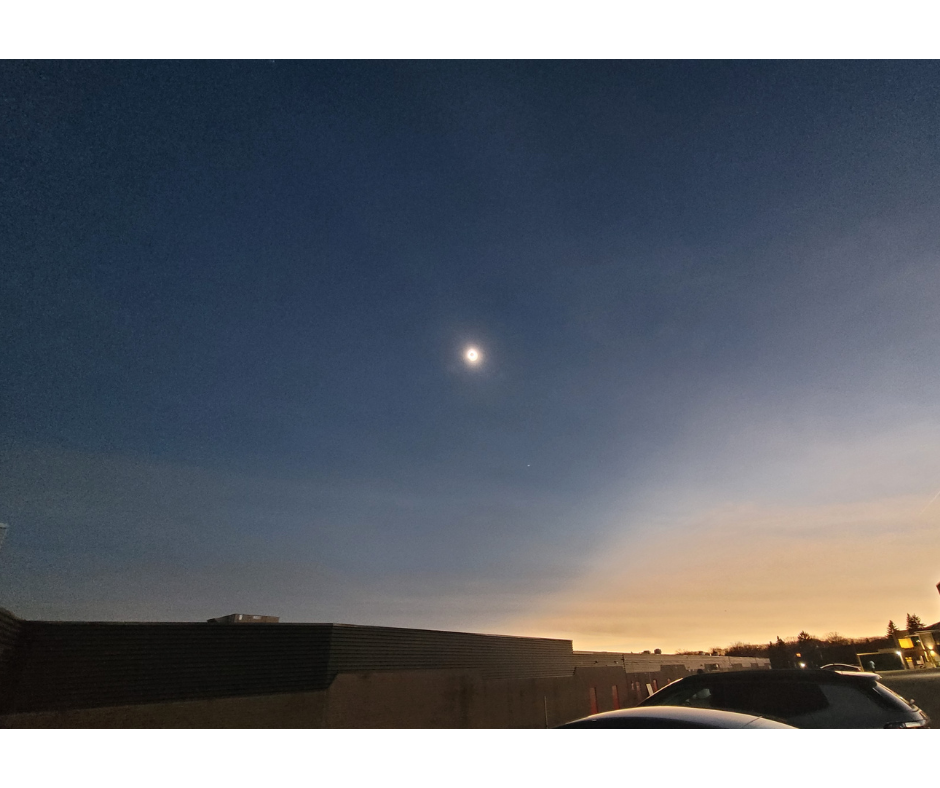
On April 8, 2024, Eastern Canada, particularly southern Ontario and Quebec and parts of the Maritimes, were treated to a breathtaking spectacle: a total solar eclipse. Dracal Technologies' offices were located in the path of the totality of the eclipse, as shown below.
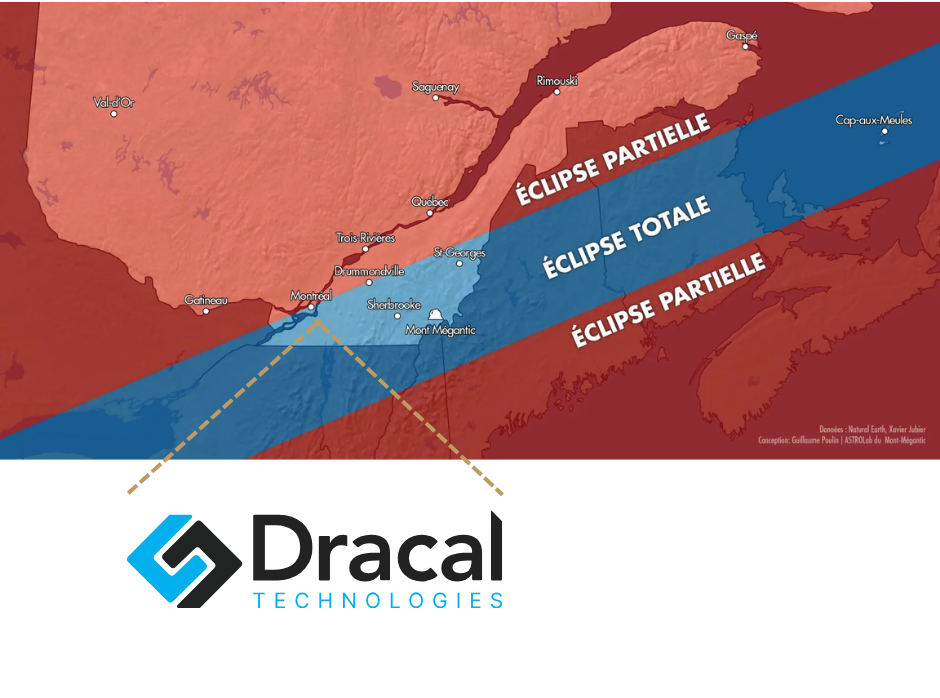
So, we took advantage of this event to show what happens with the Sun's rays during this astronomical phenomenon.
What is a solar eclipse?
A solar eclipse occurs when the Moon passes between the Earth and the Sun during daylight hours, and its shadow is cast on the Earth. This type of eclipse occurs at the new moon when the three celestial bodies are perfectly aligned.
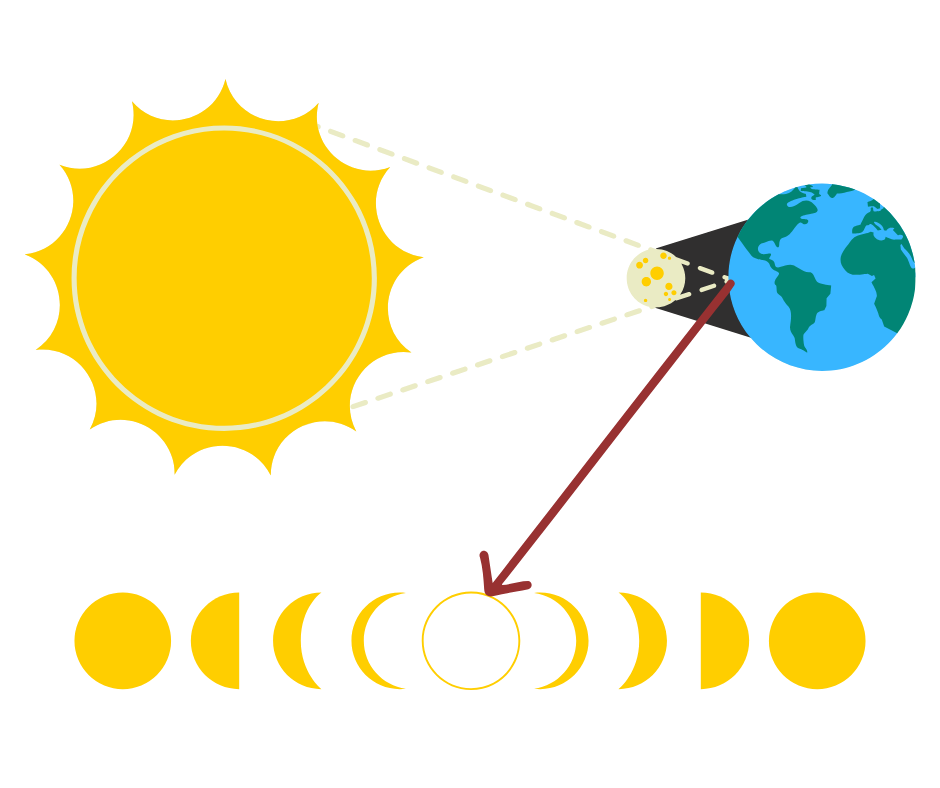
A total solar eclipse (as illustrated) is only visible on a specific surface of the Earth, a band 200 km wide, making it a rare event at any given point.
Warnings for your eyes
Several experts have reminded us that looking directly at a solar eclipse is dangerous. It is also dangerous to look directly at the sun. Intense light overstimulates the retina's photoreceptor cells, infrared rays (IR) burn the eyes, and ultraviolet rays (UVA and UVB) can cause permanent damage to the eyes.
Health Canada has established that a UV index of 3 requires adequate sun protection. However, even when the UV index is "low," eye protection is necessary on a sunny day. It can, therefore, be deduced that during the eclipse, a UV index of 1 is considered dangerous for directly viewing the sun.
What does the SPECTRUM100 measure?
The SPECTRUM100 from Dracal is an instrument that measures the light intensity of ambient light, white light, infrared radiation, RGB rays, as well as UVA and UVB rays.
The difference between ambient and white light is that ambient light reflects what the human eye perceives, while white light is the physical definition: all the coloured rays in the visible spectrum.
The maximum spectral response of RGB rays is at 625 nm, 525 nm, and 465 nm. That of infrared is 850 nm, while UVA and UVB rays are at 365 nm and 330 nm.

Experiment
We connected a SPECTRUM100 to a laptop equipped with DracalView graphic software. It is crucial to orient the sensor so that it faces the sun.
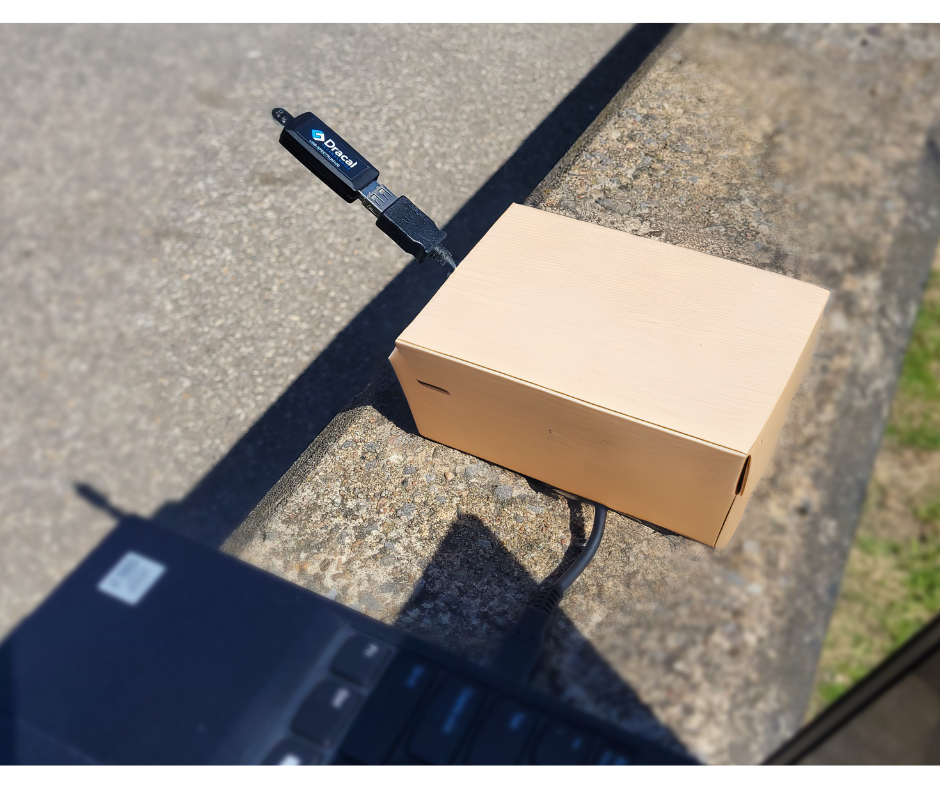
We then used the GraphView tab to monitor the eclipse's progress, but we also recorded the data using the Logging tab.
Total eclipse (3:26 pm to 3:29 pm)
Here are the details of what happened one minute before, during, and one minute after the total solar eclipse.
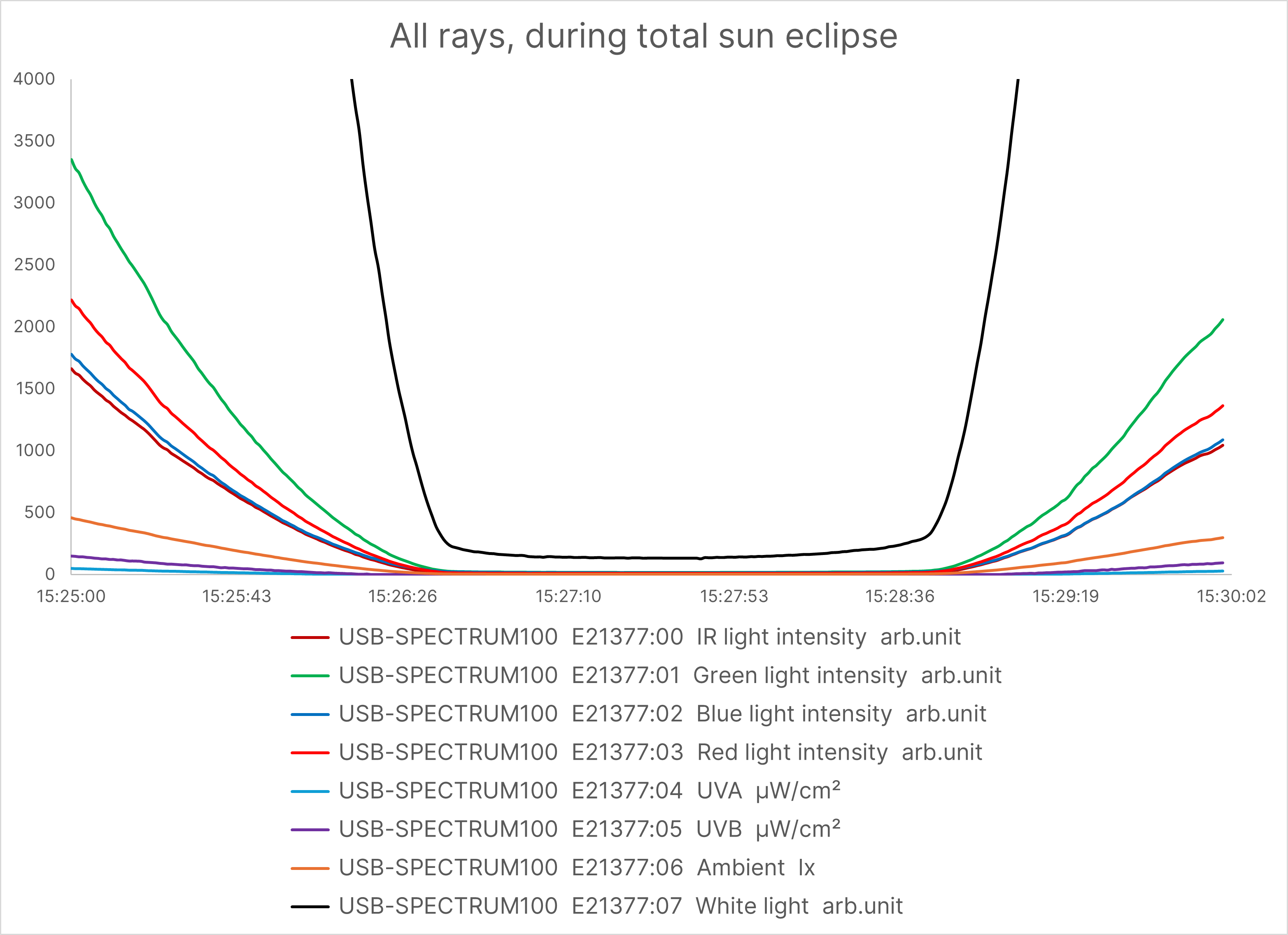
During this total eclipse period, only UV radiation reached 0 µW/cm2.
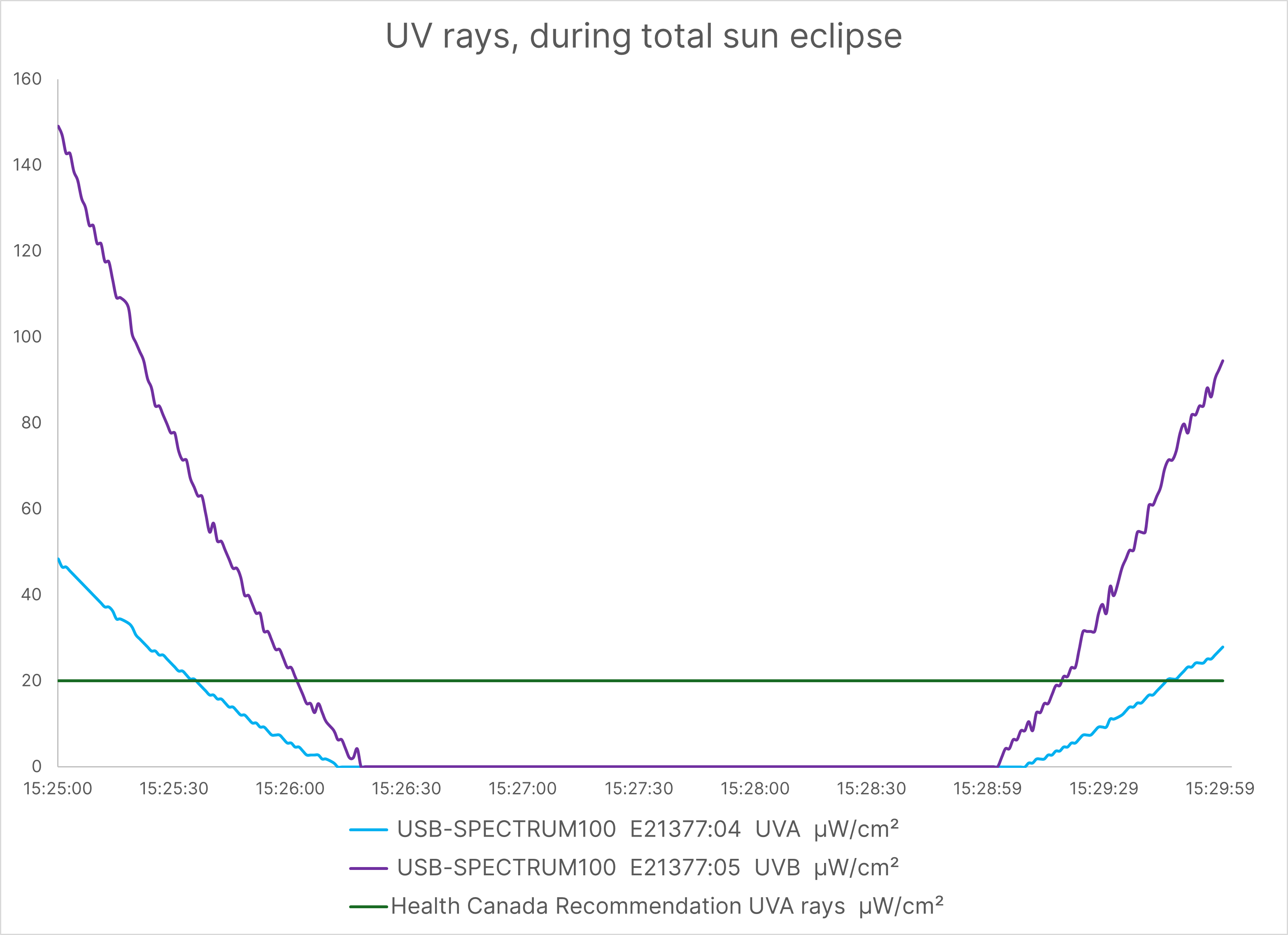
The value of 0 µW/cm2 reached by the UV rays shows why it is possible to look at the total eclipse with the naked eye. However, as shown, the value exceeds the danger level a few seconds after the end of the total eclipse. This is why ISO 12312-2 protective glasses are necessary as soon as the slightest ray of sun returns.
During a partial eclipse, UV radiation never drops below the danger threshold. Eclipse glasses must, therefore, be worn at all times.
The next total solar eclipse will take place on August 12, 2026, and will be visible in northern Spain and Portugal, as well as in Iceland and Greenland.
As for Eastern Canada, the next partial solar eclipse will occur on March 29, 2025. We bet you'll want to observe the sky with a light sensor, too!
Total duration (1:45 pm to 4:45 pm)
If you're curious, here are the different radiations captured during the entire experience.
Note 1: The maximum light intensity detected by the SPECTRUM100 is 120,000 lux, but as it was created to measure white light and ambient light indoors, the signal is saturated when the sensor is exposed to the sun.
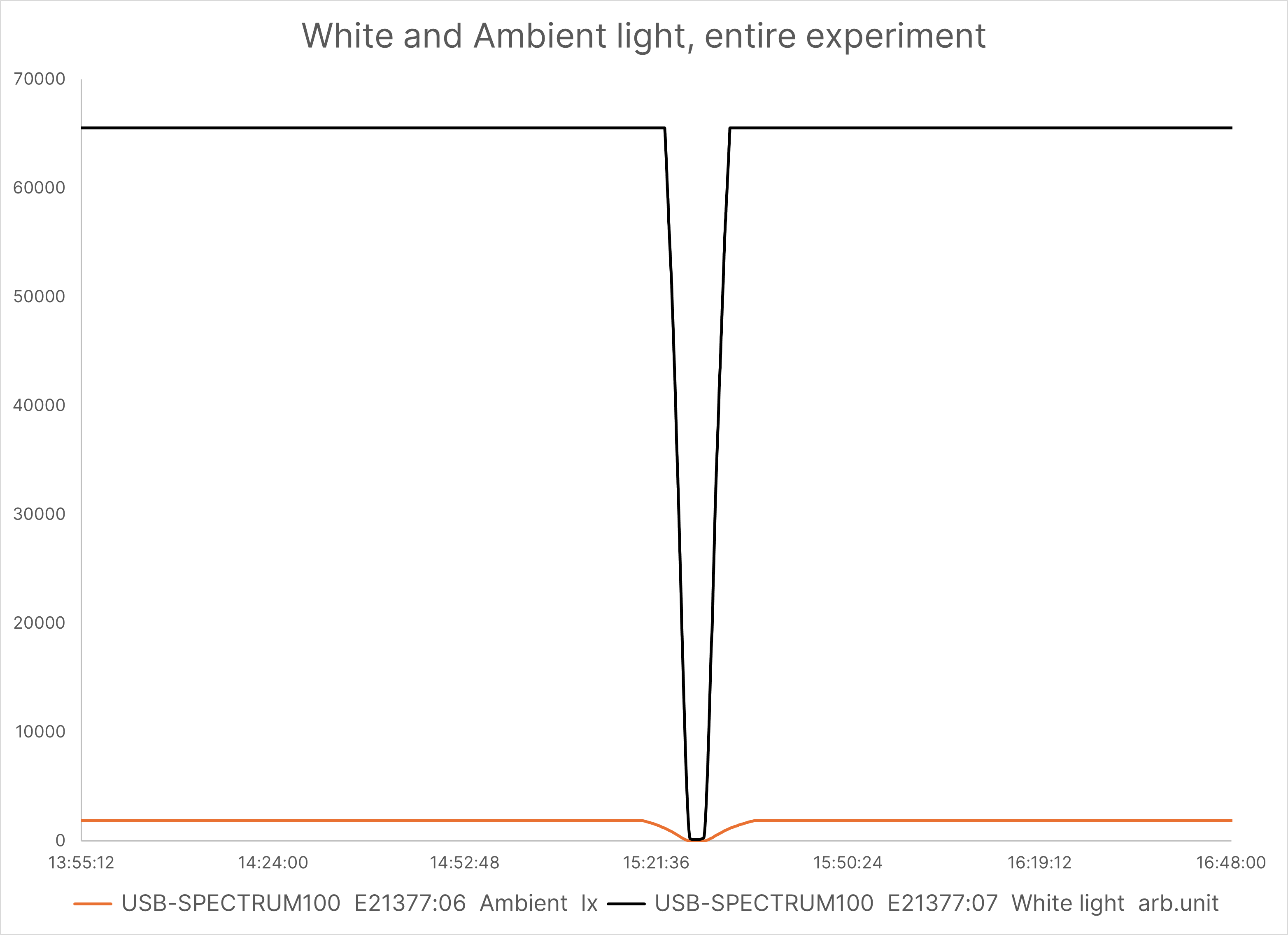
Note 2: 20 minutes before the end of the recording, the sensor was moved to face the Sun again, which had continued its course during the 3-hour experiment.
